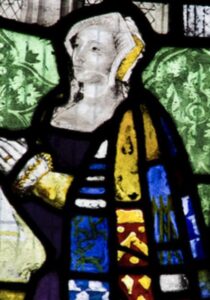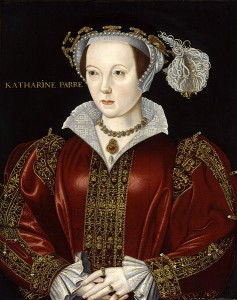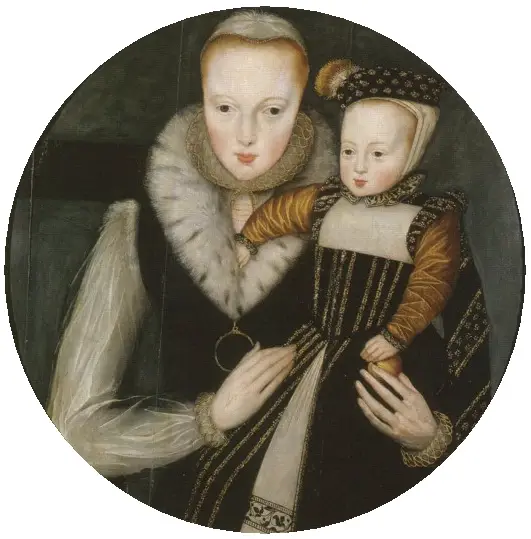 She served five of Henry VIII’s queens, witnessed scandal, betrayal, and power shifts, and became the closest confidante of the last Tudor queen consort—yet history has largely forgotten her.
She served five of Henry VIII’s queens, witnessed scandal, betrayal, and power shifts, and became the closest confidante of the last Tudor queen consort—yet history has largely forgotten her.
She was Anne Herbert (née Parr), Countess of Pembroke, the younger sister of Catherine Parr.
Anne played a key role in Tudor court life, navigating its dangers with intelligence and grace. She stood beside queens who lost their heads, carried out high-stakes royal duties, and even found herself entrusted with the doomed Catherine Howard’s jewels.
But who was Anne Herbert beyond her royal connections? What was her true role at court? And how did she manage to stay in favour through so many royal changes?
Anne was born around 1515, the youngest surviving child of Sir Thomas Parr and Maud Green, both courtiers at the Tudor court. Her mother was a lady-in-waiting to Queen Catherine of Aragon, and, like her sister Catherine Parr, Anne was given an excellent education. She was taught French, Italian, and Latin, and was so skilled in Latin that the famous scholar Roger Ascham praised her for “the perfection” of her abilities.
Like many noblewomen of the time, Anne was prepared for a life at court—and she entered royal service at a young age, being appointed as a maid of honour to Catherine of Aragon, Henry VIII’s first wife, in 1528.
She was, in many ways, a survivor of the Tudor court, navigating the rise and fall of queens with skill and discretion.
Her most notable roles included:
- Serving Anne Boleyn and Jane Seymour as a maid of honour
- Becoming a gentlewoman of the privy chamber to Anne of Cleves
- Retaining her position under Catherine Howard, where she was even entrusted with keeping the queen’s jewels when Catherine was arrested in 1541.
When Catherine Howard was sent to the Tower of London, Anne accompanied her on that fateful journey—witnessing firsthand one of the darkest moments in Henry VIII’s reign.
In 1537, Anne married William Herbert, a man known as Black Will Herbert—a skilled soldier and a rather notorious character.It was rumoured that before rising to royal favour, William had killed a mercer in Bristol and fled to France, though by 1526, he was back in England serving the king.
But Anne’s fortunes changed dramatically in 1543, when her sister Catherine Parr became Henry VIII’s sixth and final queen.
Catherine’s rise to power meant great rewards for Anne and her husband:
- William was knighted
- The couple received lands and estates
- They were gifted Baynard’s Castle, a grand London residence
Anne was not just Catherine’s sister, she was her best friend and closest confidante—and she remained at her side throughout her reign.
Like her sister, Anne held Protestant beliefs and became involved in religious politics.
 In 1546, when Catherine Parr faced a plot against her for her reformist religious views, Anne was one of the ladies who accompanied the queen when she rushed to Henry VIII to defend herself.
In 1546, when Catherine Parr faced a plot against her for her reformist religious views, Anne was one of the ladies who accompanied the queen when she rushed to Henry VIII to defend herself.
After Henry’s death in 1547, Anne continued to play an important role at court. She was a messenger between her sister, the Dowager Queen, and Thomas Seymour, Catherine’s secret second husband. She also remained close to Princess Mary (the future Mary I), despite their differing religious beliefs.
On this day in Tudor history, 20th February 1552, Anne passed away at Baynard’s Castle, leaving behind her husband and three children—Henry, Edward, and Anne. Her funeral was a grand affair, attended by hundreds of mourners, including noble lords, ladies, and 200 servants in livery.
The diarist Henry Machyn recorded her funeral, writing:
“The noble lady, the Countess of Pembroke, sister to the late Queen, was buried at St Paul’s… There were 100 poor men and women in mourning gowns, eight banner rolls of arms, and many mourners… She was buried by the tomb of the Duke of Lancaster, with banners set above her and arms on diverse pillars.”
Sadly, Old St Paul’s Cathedral was destroyed in the Great Fire of London in 1666, so her tomb no longer survives.
Anne Herbert, Countess of Pembroke, was a true survivor of the Tudor court—a woman who served five of Henry VIII’s queens, witnessed the rise and fall of rulers, and played a role in both religious and political affairs.
She was a loyal sister, a trusted courtier, a patron of the arts, and a woman who navigated the treacherous world of Tudor politics with intelligence and grace.




Leave a Reply